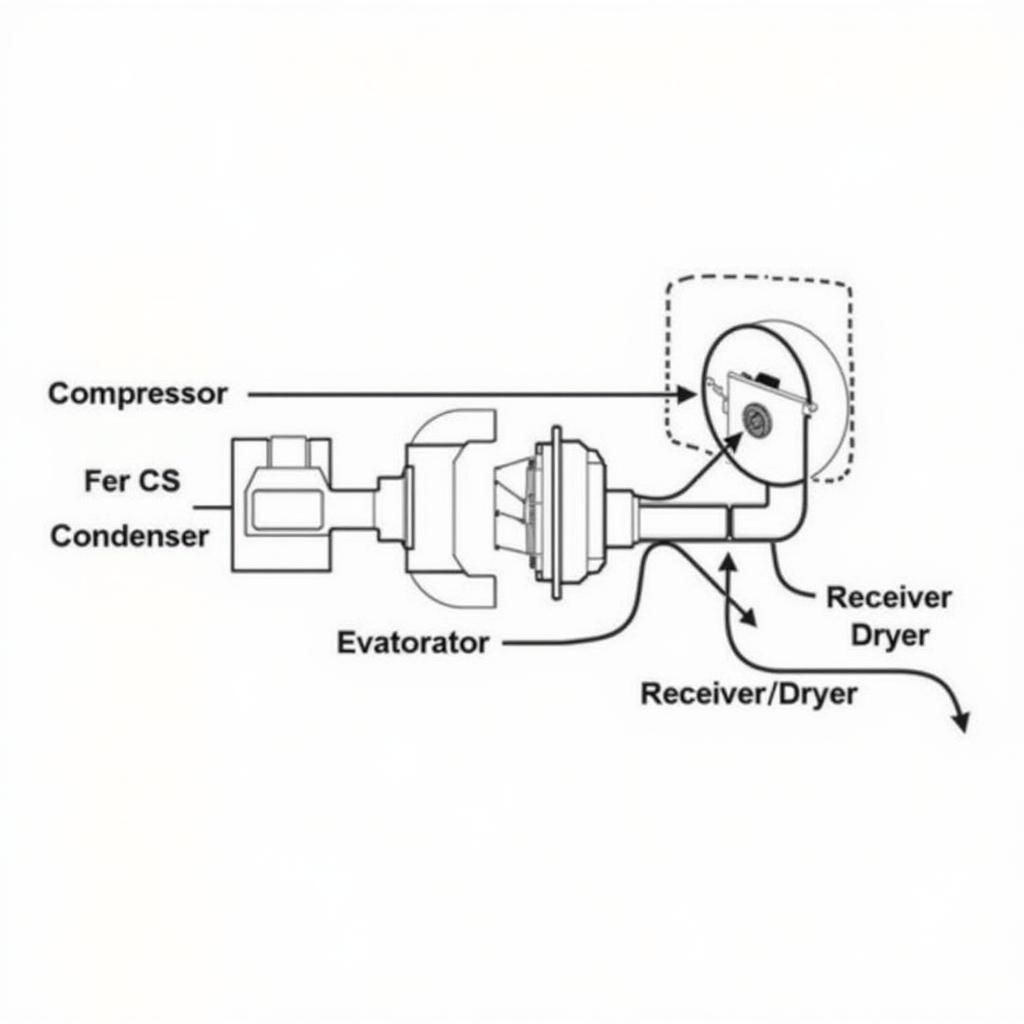How to Service Car AC Systems: A Comprehensive Guide
Car AC systems are essential for a comfortable driving experience, especially during hot summer months. Over time, these systems can experience wear and tear, leading to reduced cooling efficiency or complete failure. Understanding how to service your car’s AC system can save you money on costly repairs and keep you cool on the road.
 Car AC System Components
Car AC System Components
Understanding Your Car’s AC System
Before diving into the servicing process, it’s crucial to understand the basic components and their functions:
- Compressor: This component compresses and circulates the refrigerant throughout the system.
- Condenser: Located at the front of the vehicle, the condenser cools the refrigerant, converting it from a high-pressure gas to a high-pressure liquid.
- Evaporator: Positioned inside the dashboard, the evaporator absorbs heat from the cabin air as the refrigerant evaporates, thus cooling the air blown into the car.
- Receiver/Dryer: This component stores refrigerant and removes moisture from the system, preventing corrosion and damage.
 Refrigerant Flow in Car AC
Refrigerant Flow in Car AC
Common Car AC Problems and Their Causes
Several factors can lead to car AC problems, ranging from simple issues to more complex mechanical failures:
- Low Refrigerant Levels: One of the most common reasons for poor AC performance is low refrigerant levels caused by leaks in the system.
- Electrical Issues: Problems with the AC compressor, blower motor, or electrical connections can disrupt the system’s operation.
- Clogged Condenser or Evaporator: Dirt, debris, and insects can accumulate on the condenser and evaporator fins, restricting airflow and reducing cooling efficiency.
- Faulty Compressor: A malfunctioning compressor, often due to wear and tear or lack of lubrication, can significantly impact the AC’s performance.
How to Service Your Car’s AC System
While some AC repairs require professional expertise, there are several maintenance tasks you can perform at home:
1. Check and Recharge Refrigerant Levels:
- Caution: Refrigerant is a hazardous material. If you are not comfortable working with it, consult a qualified mechanic.
- Use an AC pressure gauge to check the refrigerant pressure.
- If the pressure is low, use an AC recharge kit to add refrigerant following the instructions carefully.
 Recharging Car AC Refrigerant
Recharging Car AC Refrigerant
2. Inspect and Clean the Condenser and Evaporator:
- Locate the condenser at the front of the vehicle.
- Use a soft brush or compressed air to remove dirt and debris from the condenser fins.
- Consult your vehicle’s manual for the evaporator location and cleaning instructions.
3. Check the AC Belt and Tension:
- The AC compressor is typically driven by a belt.
- Inspect the belt for signs of wear, cracks, or fraying.
- Check the belt tension and adjust it according to your vehicle’s specifications.
When to Seek Professional Help
For more complex issues like compressor failure or refrigerant leaks, it’s best to seek help from a qualified mechanic. Professional technicians have the expertise, tools, and equipment to diagnose and repair these issues effectively.
Conclusion
Regular servicing of your car’s AC system can prevent costly repairs and ensure optimal performance, keeping you comfortable during hot weather. By following these simple tips and knowing when to seek professional help, you can enjoy a cool and refreshing driving experience all year round.

